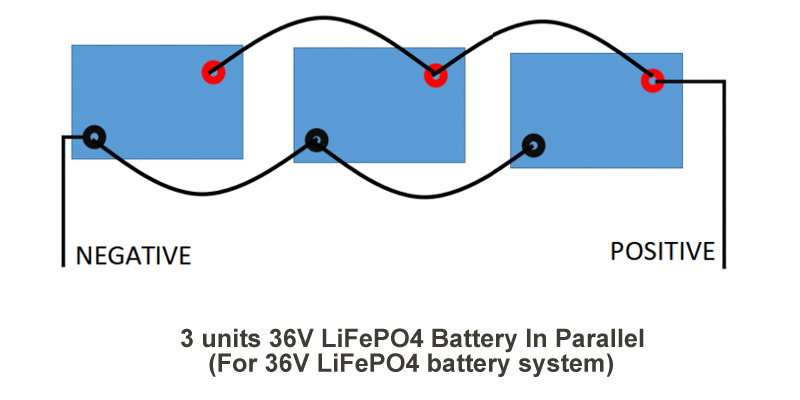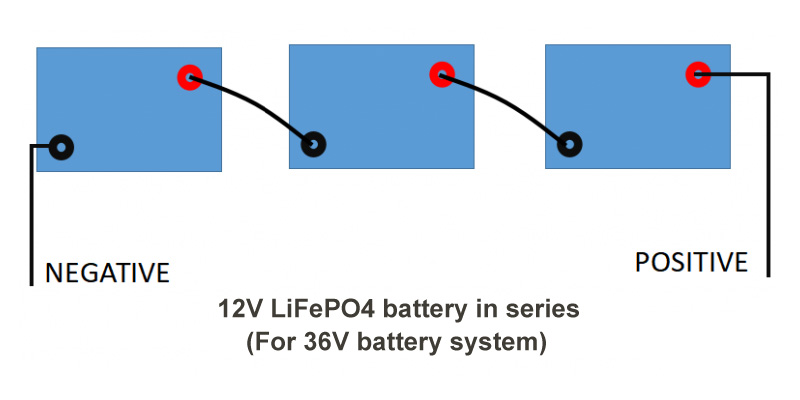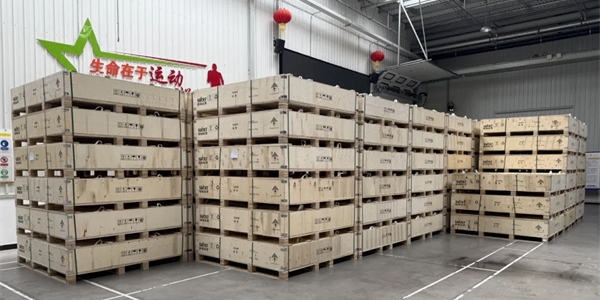How to Set Up a 36V LiFePO4 Battery System: Installation Methods Compared
When powering equipment that requires 36 volts, such as trolling motors, golf carts, or small forklifts, you have two main options for your lithium battery setup: a single 36V LiFePO4 battery or three 12V LiFePO4 batteries connected in series. Each method has its own advantages, and the best choice depends on your specific needs and technical comfort level.
Understanding 36V LiFePO4 Batteries
A 36V LiFePO4 battery is a lithium iron phosphate battery system designed to deliver a stable 36-volt output. These batteries are increasingly popular due to their high energy density, long cycle life, and superior safety compared to traditional lead-acid batteries. They are commonly used in marine applications (trolling motors), light electric vehicles (golf carts, e-bikes), and industrial equipment (small forklifts).
Installation Method 1: Single 36V Battery (Plug-and-Play)

Step-by-Step Installation:
· Connect the positive terminal (red) of the 36V battery to the positive lead on your motor or device.
· Connect the negative terminal (black) to the negative lead.
· Secure all connections to prevent loose wiring.
Advantages:
· Simpler setup – No need for series wiring; just connect and power on.
· More reliable – A single battery reduces connection points, minimizing failure risks.
· Easier maintenance – If the battery fails, replacement is straightforward.
Installation Method 2: Three 12V Batteries in Series

Step-by-Step Installation:
· Connect the negative terminal (black) of the first 12V battery to the positive terminal (red) of the second battery.
· Repeat the process to connect the second and third batteries.
· Finally, connect the positive terminal of the first battery to your motor’s positive lead and the negative terminal of the third battery to the motor’s negative lead.
Advantages:
· Flexibility – If one 12V battery fails, you can replace it individually rather than the entire system.
· Compatibility – Many existing chargers support 12V batteries, eliminating the need for a specialized 36V charger.
· Cost-effective – Smaller 12V batteries may be more affordable than a single large 36V unit.
Which Option Is Better?
1. Choose a Single 36V Battery If:
· You prefer a hassle-free, plug-and-play solution.
· You want fewer connection points for better reliability.
· Your application requires a compact, integrated power source.
2. Choose Three 12V Batteries in Series If:
· You need modularity for easier troubleshooting and replacement.
· You already have 12V chargers and want to avoid additional costs.
· Your system benefits from distributed weight (e.g., in electric vehicles).
Additional Tips for Safety & Longevity
· Install a power switch on the positive lead to cut off power when not in use, enhancing safety and battery life.
· Use a compatible LiFePO4 charger to prevent overcharging and ensure optimal performance.
· Check connections regularly to avoid loose wiring, which can cause power loss or safety hazards.
Why LiFePO4 Batteries Are the Best Choice for 36V Systems
Compared to traditional lead-acid or AGM batteries, LiFePO4 (lithium iron phosphate) batteries offer:
1. Longer lifespan (2,000+ cycles vs. 300-500 for lead-acid)
2. Lighter weight (up to 70% reduction in some cases)
3. Stable voltage output (minimal voltage drop under load)
4. Safer chemistry (no risk of thermal runaway like other lithium types)
Final Thoughts
Whether you opt for a single 36V LiFePO4 battery or three 12V batteries in series, both setups provide reliable power for 36V applications. The best choice depends on your priorities: simplicity and reliability favor the single-battery approach, while flexibility and cost savings may make the series configuration more appealing.
For high-quality 36V and 12V LiFePO4 batteries, along with compatible chargers, consult trusted suppliers(Energy-x) to ensure optimal performance and longevity for your system.

